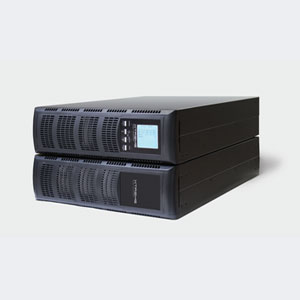
Keep Your Eyes Open for IFC 608: Preparation of Your Site for Stationary Storage Batteries
Throughout Southern California, municipalities are more and more enforcing the site preparation requirements outlined in Section 608 of the International Fire Code (IFC). The requirements (which apply to valve-regulated lead-acid – VRLA – battery arrays that contain more than 50 gallons of electrolyte) detail that any room where these batteries reside and are used for standby power, emergency power or UPS, shall have the following installed:
- Thermal Runaway Protection – VRLA battery systems shall be provided with a listed device or other approved method to preclude, detect and control thermal runaway. (Click here for more information on thermal runaway and its causes, courtesy of C&D Technologies)
- Spill Control & Neutralization – An electrolyte neutralization kit is needed in the same room.
- Ventilation – Ventilation devices must be installed to limit possible hydrogen buildup in the event of excessive battery venting.
- Signage – Proper notification and warning signs must be posted at the entrance of the battery room.
- Smoke Detection – An approved automatic smoke detection system needs to be operating inside the battery room.
- Seismic Protection – The battery system shall be seismically braced in accordance with the International Building Code.
Within the past few years the enforcement of the above requirements has been limited to new construction projects. However, there are greater incidences of local authorities requiring these modifications to existing battery rooms installed prior to the drafting of these regulations (2009). Most of these recent cases have been limited to very large arrays of battery strings (240 or more batteries). But, there is evidence this type of retroactive enforcement may find itself being applied in smaller and smaller applications that meet the 50 gallon electrolyte limitation.
If you are concerned that your installation may become a target of this regulation, here are a few steps you can take:
- Contact your UPS/VRLA battery service company and determine the quantity of electrolyte in your battery array and see if it meets the 50 gallon minimum threshold. This will help determine if you need to take any additional steps.
- Contact your local electrical and/or mechanical engineering firm and enlist their services. They will evaluate your installation and knowledge of local inspection authorities and determine whether or not the above regulations apply to your specific site. In addition, they will be able to craft a design in meeting these applications.
- Consult with your UPS/VRLA battery service company to determine what the right Thermal Runaway & Spill Neutralization Kits best suit your applications. There are many to choose from in the marketplace.
- Consult with your mechanical and/or electrical contractor as to the best method to implement ventilation, signage, smoke detection and seismic protection.
The costs associated with the above modifications vary widely, depending upon the number of batteries, physical layout of the battery room, style of battery cabinets, and proximity to other sensitive areas in your building. However, with the right preparation and homework you can prepare your site to be a safe environment for you and your co-workers.


Follow Us!